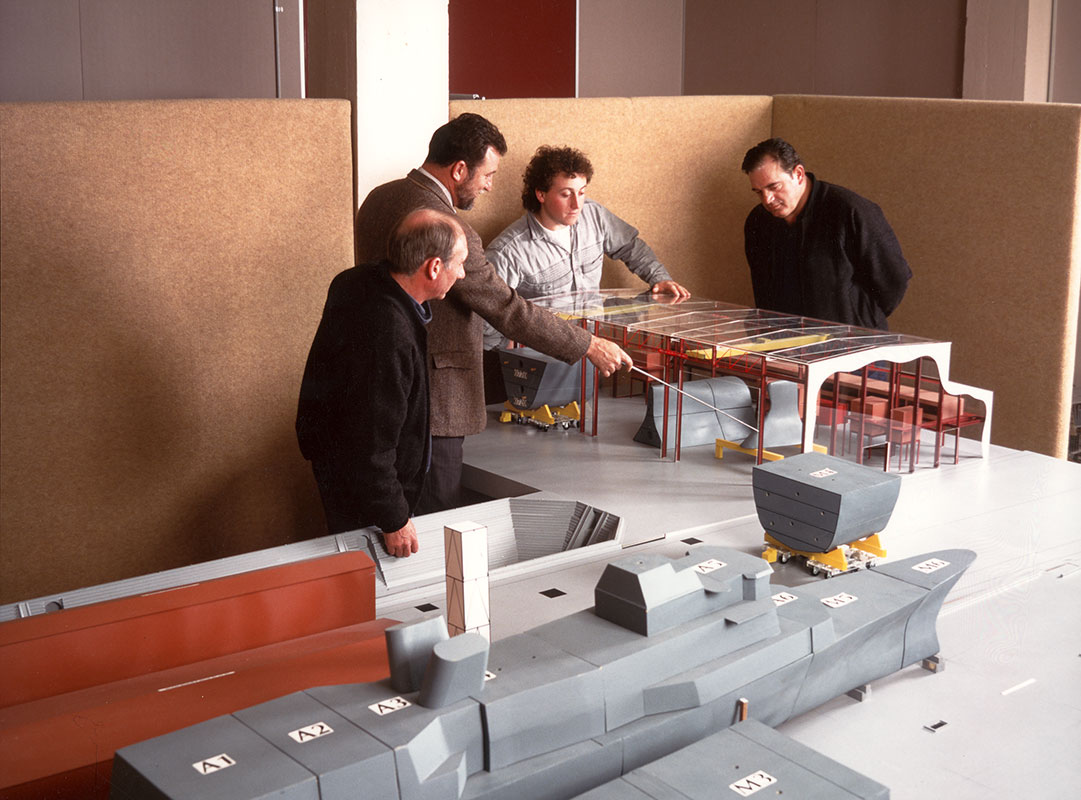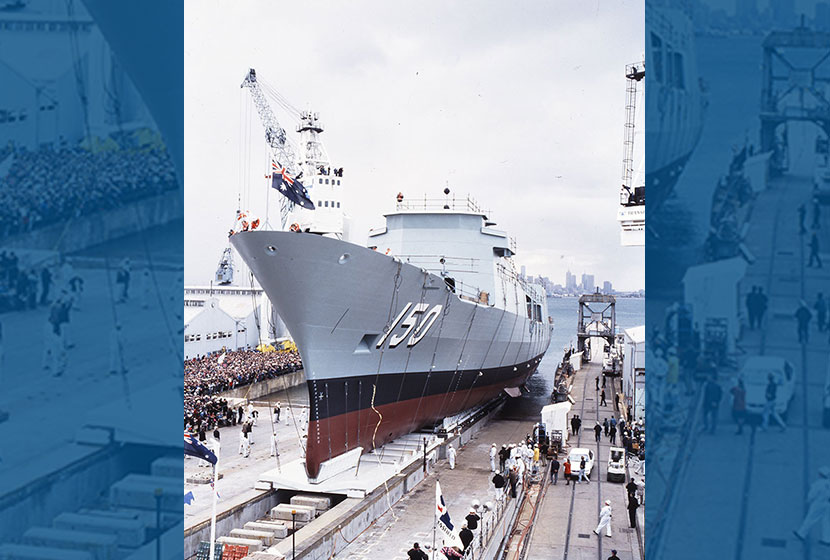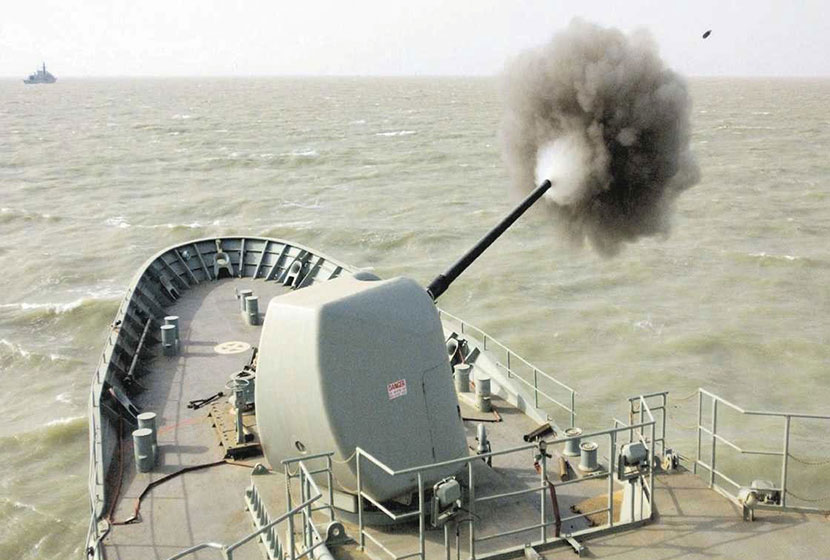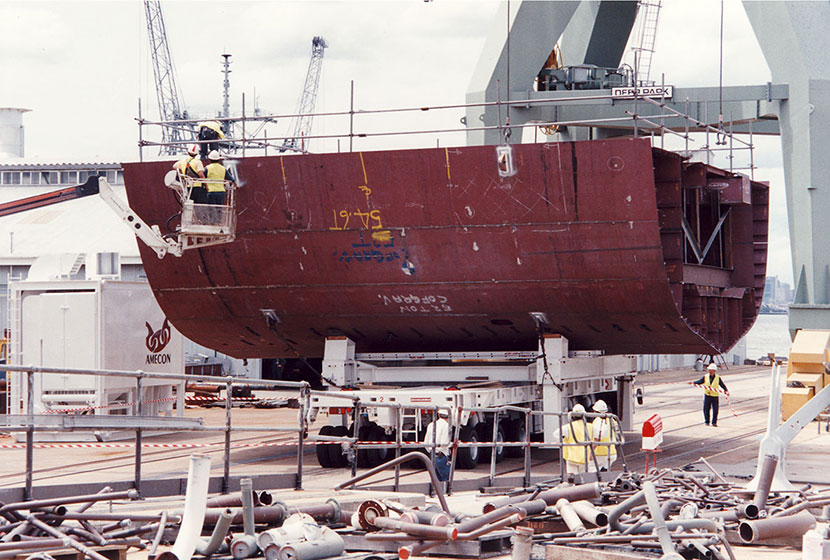As well as giving Transfield ownership of AMECON, Williamstown Dockyards, the contract to finish the two FFG-7 frigates and the three new entities Eglo, ASI and ICAL, the latter company extended Transfield's capacity significantly into the power generation market.
In order to achieve flexibility, innovation and maximum efficiency Transfield, in a highly controversial move, restructured work practices at the Dockyards. The number of Unions was reduced from 23 to three, 1,200 former Commonwealth workers were shifted elsewhere in the Public Service or made redundant, and a largely new workforce of 330, including subcontractors, administration and management staff, was hired. Due to these measures, by 1995 productivity rose by 700 per cent.
Video: Transfield's Involvement in Defence.


















































